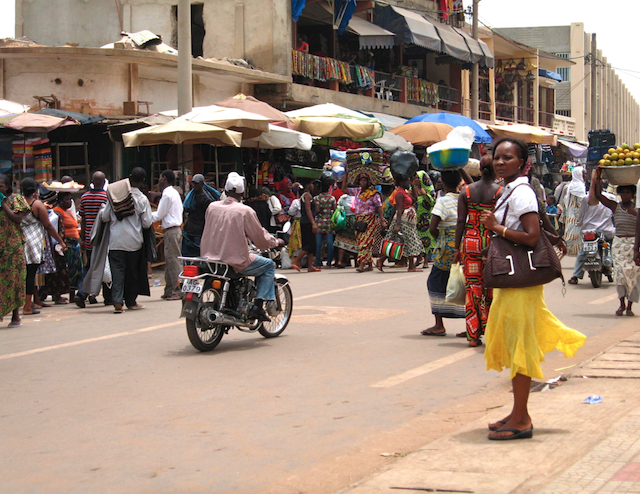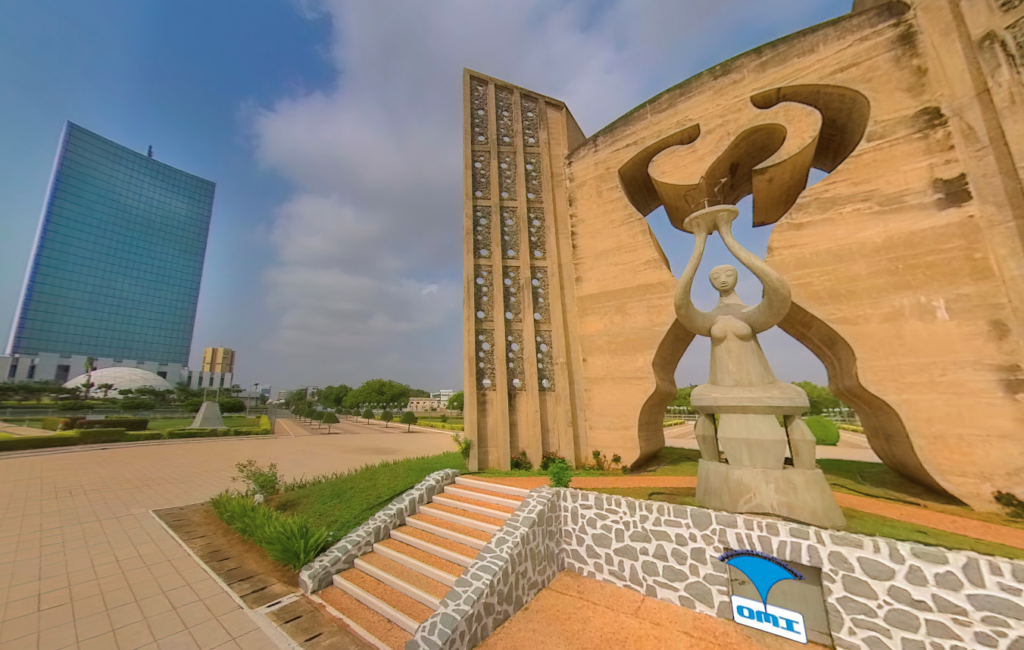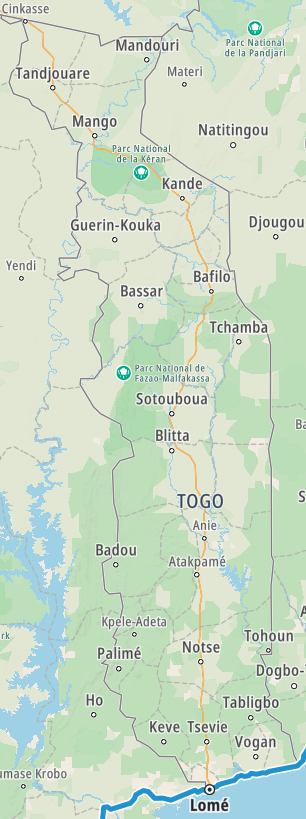Togo / République togolaise – Let’s explore here

What’s it like in Togo?
Togo is a fairly small, tropical country in west Africa, about the size of Croatia. It consists mostly of rainforest and savanna, with lagoons and beaches along its 35 miles (56 km) coast. The highest point is Mount Agou, at 3,235 ft (986 m) above sea level.
As part of the Slave Coast, It has a rich and troubling history, resulting in it being one of the least developed and poorest countries on the planet. Togo joined the Commonwealth in 2022. Its neighbours include Benin, Ghana and Burkina Faso.
The population of Togo is around 9½ million people (2024), about ¼ of whom live in the metropolitan area of the capital, Lomé.

A bit about the history of Togo
Pre-Colonial Era
Before colonisation, the area that became Togo was inhabited by several ethnic groups, including the Ewe, Tem and Mina. These groups engaged in agriculture, fishing and trade. Togo was influenced by powerful empires such as the Ashanti Empire to the west, and its coastal region was an important centre for the transatlantic slave trade.
Colonial Period
In the late 19th century, Togo was colonised by Germany, which established German Togo (Togoland) as a colony. Under German rule, Togo became an economically productive area, primarily due to its exports of cocoa, coffee and minerals. During World War I, Togo was seized by British and French forces and divided between Britain and France after the war. Togo was administered as a French mandate under the League of Nations, and later as a French trust territory under the United Nations.
Path to Independence
Togo gained independence from France on 27 April 1960, becoming the Togolese Republic. Sylvanus Olympio, the first president, was a key figure in the independence movement. However, his presidency was short lived, as he was assassinated in a coup in 1963, shortly after taking office. His death marked the beginning of political instability in Togo.
The Gnassingbé Regime
In 1967, Lieutenant Colonel Gnassingbé Eyadéma seized power through a military coup and would go on to rule Togo for over 38 years. His regime was marked by authoritarianism, with limited political freedoms and opposition suppression. Eyadéma maintained control through a combination of patronage, military force and manipulation of the political system. During his rule, Togo saw some economic growth, particularly in agriculture and phosphate production, but the country remained highly dependent on foreign aid.
Eyadéma’s Death and Succession
Eyadéma died in 2005, leaving his son, Faure Gnassingbé, to succeed him. The transition to Faure’s leadership was controversial, as he assumed power with the support of the military, which led to protests and international criticism. In the aftermath, Togo underwent a period of political unrest, with calls for greater democracy and reform. Despite the controversy, Faure Gnassingbé was confirmed as president in elections, and he has remained in power since.
Political Reforms and Challenges
In the years following Eyadéma’s death, Togo faced significant pressure to reform its political system. In 2007, the government agreed to a dialogue with opposition groups, leading to constitutional amendments aimed at limiting presidential terms and introducing greater political freedoms. However, political opposition in Togo remains divided, and the ruling party continues to dominate the political landscape.
Togo in 2025
As of 2025, Togo continues to be ruled by Faure Gnassingbé, who has been in power for over 20 years. Despite reforms, his government is still criticised for its control over the political system, human rights abuses, and the suppression of political opposition. Economically, Togo has made progress, particularly in infrastructure development, trade and phosphate production, but it remains one of the poorest countries in the region. Togo faces challenges such as high unemployment, poverty and a reliance on foreign aid. Political and civil society reforms continue to be a point of contention as the country navigates its future.

Togo road trip
Our Togolese road trip is part of a much larger African road trip.
Map of our Road trip through Togo

Our current planned road trip through Togo takes us from Ghana along the coast towards Lomé, before moving on to Benin. No doubt we’ll explore the country much more than this continent-spanning short route shows, in particular checking out the capital and inland Togo.
Hopefully our journey will improve our knowledge of this intriguing and beautiful country, and enable us to meet some interesting people. We’ll be updating this page at that time – don’t forget to check back 🙂
What’s it like to drive in Togo?
They drive on the right hand side of the road in Togo. In the main, roads are very poor, with many being unsurfaced dirt tracks. Driving standards are also poor.
Do you require an international driving permit in Togo?
We’ve created a dedicated page to driving abroad, which answers this question, and more, which you might find helpful.
Can you use your UK driving license when driving through Togo?
We’ve created a dedicated page to driving abroad, which answers this question, and more, which you might find helpful.
Do I need a carnet de passages to drive in Togo?
We’ve created a dedicated page to driving abroad, which answers this question, and more, which you might find helpful.
What currency do they use in Togo?
In Togo they use the West African CFA franc. Cash is widely used. The use of credit / debit cards is not widely accepted. Travellers cheques are not readily accepted. There are few ATMs outside of the capital, Lomé.
The West African CFA franc is used in Benin, Burkina Faso, Guinea-Bissau, Côte d’Ivoire, Mali, Niger, Senegal and Togo.
What language do they speak in Togo?
They mostly speak Ewé and Kabiyé in Togo, although French is also widely spoken, and is the official language of the country.
What time zone is Togo in?
Remember, when you’re planning your next trip to take a look at what time zone it’s in.
Do I need a visa to visit Togo?
We’ve created a dedicated, more comprehensive page on visas, which you should find helpful. Check it out!
Is wild camping legal in Togo?
Yes, wild camping is fine in Togo.
What plug / socket type do they use in Togo?

In Togo they use plug / socket type C.
Health issues in Togo
Is it safe to drink water in Togo?
No, it is not safe to drink tap water in Togo. Bottled water is readily available throughout the country.
What vaccinations are required for Togo?
This NHS website is kept up to date with all relevant information on vaccinations in Togo.
Phones in Togo
What is the country calling code for Togo?
The country calling code for Togo is +228
What are the emergency phone numbers in Togo?
- The emergency number for police in Togo is: 117
- In Togo, the emergency number for ambulance is: 8200
- The emergency number for fire in Togo is: 118
If you’ve got some useful info that you’d like to share, let us know!
And don’t forget to check out all the other pictures!
